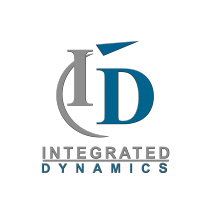The Worldwide Space Situational Awareness Industry is Expected to Reach $1.8 Billion by 2026 - ResearchAndMarkets.com
The "Space Situational Awareness Market by Solution (Services, Payload Systems, and Software), Orbital Range (Near-Earth and Deep Space), End Use (Commercial, and Government & Military), Object, Capability, and Region - Global Forecast to 2026" report has been added to ResearchAndMarkets.com's offering.
The Space situational awareness market is projected to grow from USD 1.5 billion in 2021 to USD 1.8 billion by 2026, at a CAGR of 4.6%.
Based on solution, the service segment is estimated to witness the largest share of the space situational awareness market from 2021 to 2026.
Based on solution, the services segment of the space situational awareness market is estimated to hold the dominant market share in 2021. This is due to the increasing need for expansion of space weather services networks with additional capabilities, development of SSA tools, and the need for space surveillance and tracking for the smooth functioning of satellites. In July 2021, the Space Weather Prediction Center (US) added the WAM-IPE, its newest model, to the Space Weather Prediction Center's toolkit. This new model is focused on the part of the Earth's atmosphere where many US satellites are in orbit and could be vulnerable to energy from the sun.
In July 2021, the US Space Force Service is pursuing a deep space advanced radar concept program, also known as DARC. According to the service, the platform is a ground-based radar system designed to detect, track, and maintain custody of deep space objects 24/7. It will primarily track objects in the geosynchronous-Earth orbit, though it could also track objects in low-Earth orbit. DARC will augment the military's space surveillance network as an additional sensor with increased capacity and capability to monitor deep space objects and provide full global coverage.
Based on orbital range, a near-Earth segment of the space situational awareness market is projected to witness the largest share in 2021.
Based on orbital range, the near-Earth segment is projected to lead the space situational awareness market during the forecast period. The growing demand for high-speed, low-latency communication and increased satellite and spacecraft launches in the low Earth orbit are primarily driving this segment. In March 2020, Russian built a Soyuz-2.1b carrier rocket equipped with a Fregat booster. It was launched successfully from the Plesetsk Cosmodrome carrying a Glonass-M navigational satellite into medium Earth orbit. In March 2021, an undisclosed commercial customer awarded a contract to Lockheed Martin to build and deliver a payload intended to ensure space domain knowledge. The payload, equipped with an optical sensor, will be used for object detection and image capture from geosynchronous Earth orbit in support of efforts to maintain space situational awareness.
Based on end-use, the commercial segment is estimated to account for the fastest growth of the space situational awareness market from 2021 to 2026.
Based on end-use, the commercial segment of the space situational awareness market is projected to grow at the highest CAGR during the forecast period. This growth is driven by investments from private players in space research and satellite communication services, the need for real-time data on mission-related debris and space traffic assessment, and the need to monitor the structural integrity of nuclear power stations.
The North American market is projected to contribute the largest share from 2021 to 2026 in the space situational awareness market.
Based on region, North America is expected to lead the space situational awareness market from 2021 to 2026. The US is a lucrative market for Space situational awareness in the North American region. The US government has taken various initiatives to encourage the growth of the space situational awareness market. For instance, space situational awareness programs conducted by the US government focus on intelligence, surveillance, reconnaissance, environmental monitoring, and command & control. Since the 1960s, the US military has had significant SSA capabilities, largely based on the backbone of missile warning radar.
Market Dynamics
Drivers
- Increasing Deployment of Small Satellites
- Increasing Demand for Space-Based Sensing Activities
- Growing Space Congestion
- Rising Demand for Earth Observation Imagery and Analytics
- Increase in Number of Space Exploration Missions
Restraints
- Complex Regulatory Requirements
Opportunities
- Rising Demand for Lower Earth Orbit (Leo)-Based Services
- Increasing Involvement of Private Players in Global Space Industry
- Growing Need for Commercial On-Orbit Satellite Activities
- Increased Government Investment in Space Situational Awareness
Challenges
- Inability to Detect Micro-Sized Debris
Companies Mentioned
- Applied Defense Solutions
- Elecnor Deimos Group
- Etamax Space
- Exoanalytic Solutions
- Globvision
- GMV Innovating Solutions
- Kratos Defense & Security Solutions, Inc.
- L3Harris Technologies
- Lockheed Martin Corporation
- Northstar Earth & Space Inc.
- Parsons Corporation
- Peraton
- Schafer Corporation
- Spacenav
- Telespazio S.P.A.
- Vision Engineering Solutions, LLC
For more information about this report visit https://www.researchandmarkets.com/r/oyhljk
View source version on businesswire.com: https://www.businesswire.com/news/home/20211130005711/en/





